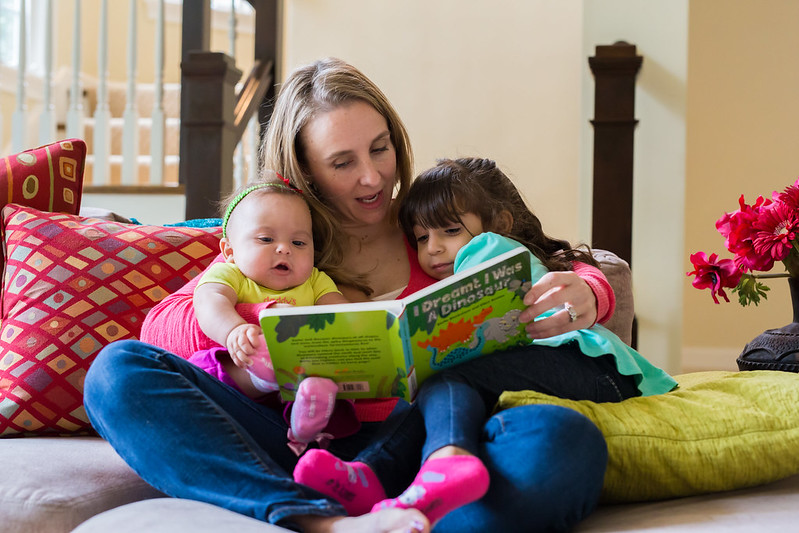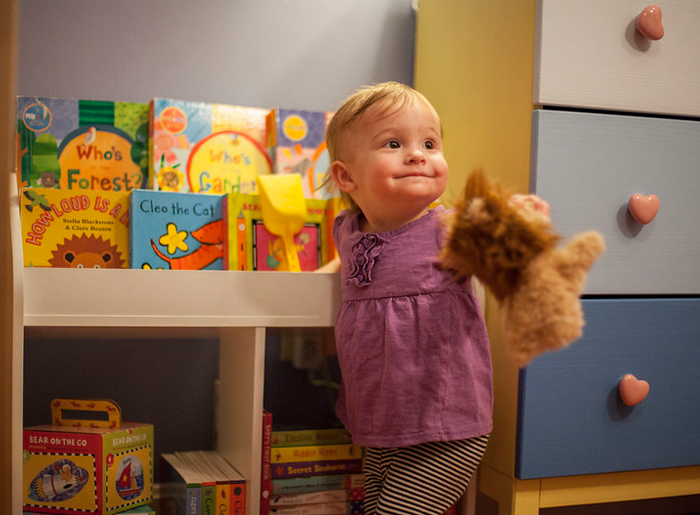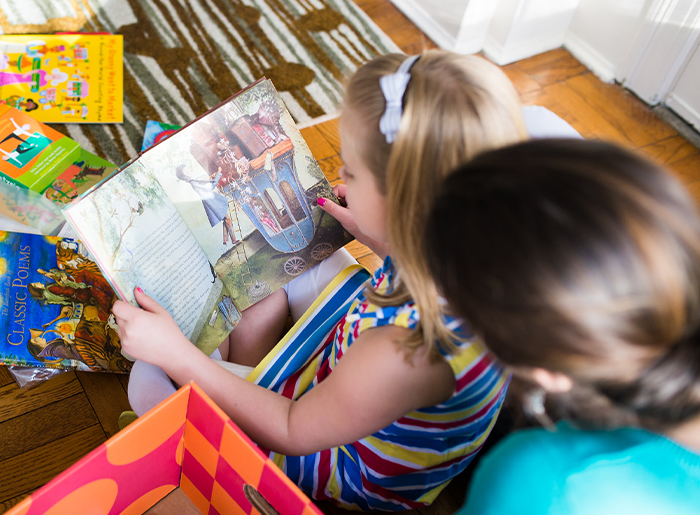
In the absence of schooling or childcare-as-usual, books in the home serve as essential teaching tools.
Reading aloud is also an easy way to carve out quality time together. So how can we make sure that kids love reading — from birth? It’s surprisingly easy, and you might be pleased to discover you’re doing many of these things already.
1. Let your child see you reading books for pleasure

Many of us don’t read physical books anymore. (When is the last time your child saw you reading an actual physical book for pleasure?) Try dusting one off and giving it a go. Children’s is much more influenced by what you actually do than what you tell them to do. So if you want them to read books for pleasure, it’s important to model this for them. Invite them to look at books side-by-side with you, or tell them about the book you’re reading!
Tip: Model how to take good care of books by treating your own books like prized possessions. Ask children to put their own books away on shelves or in baskets when they are done reading them — and teach them to respect books by not allowing them to step on them or draw in them!
2. Create enjoyable read aloud routines
This is probably the most important thing you can do to help your child create positive associations with reading! Keep in mind that reading doesn’t need to just happen at bedtime. Consider reading aloud during dinner or bath time. Reading together not only shows children that reading is fun and valuable, but it also serves to strengthen your bond.
And when kids can read on their own? Keep reading aloud! Doing so helps build vocabulary and comprehension skills, and older kids still love listening to stories.

3. Keep a wide selection of books accessible in your home

Research shows that access to a variety of books is an important factor when it comes to getting children interested in reading. Wondering how to expand your collection so that it includes various genres? The Barefoot Book Box is an easy way to make sure you have variety in your home library.
Tip: Rotate your child’s “available” book selection periodically. It’s fine to keep out all the time, but put part of the collection in out-of-sight storage while keeping an intentional selection visible. This encourages children to more fully explore the books that are in front of them. When you swap in books that have been in “storage,” this renews interest in reading all over again!
4. Allow children to select the books they read
Children become more interested in reading when they are encouraged to select the books they read. Storing books where kids can easily reach them is a surefire way to spark interest in reading. You can start this very early on! Creating a bookshelf or basket at a baby’s level and encouraging them to pick their own stories is a great way to raise a reader for life.
And when it comes to selecting new books to purchase or borrow, let your kids’ interests lead the way. Seek out books with topics that you think will engage your child. Whenever possible, allow children to browse and select their own books.

5. Schedule “quiet reading time” each day

This is a technique used in preschool classrooms that’s easily adapted for the home. Teach children at an early age that looking at books independently for a small period of time every day is part of their daily home routine. This is especially great for transition times when you need to keep kids occupied. For instance, you can keep a basket of books in the kitchen so that your child can have “quiet reading time” as you prepare dinner. Swap in a new selection of books every week to maintain interest.
Quiet reading times are not only beneficial for kids’ literacy development, but they will also give you some valuable time to yourself.








